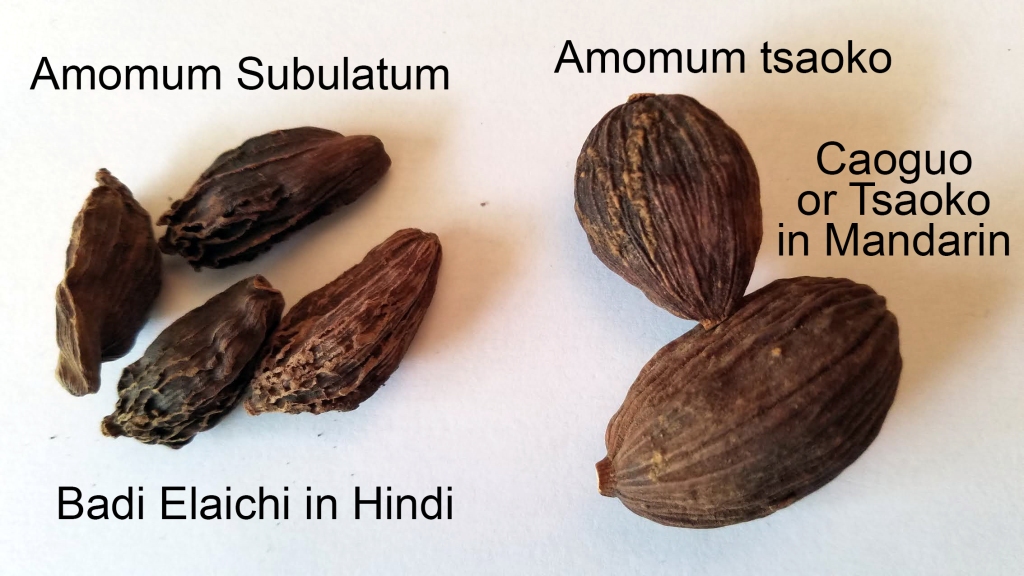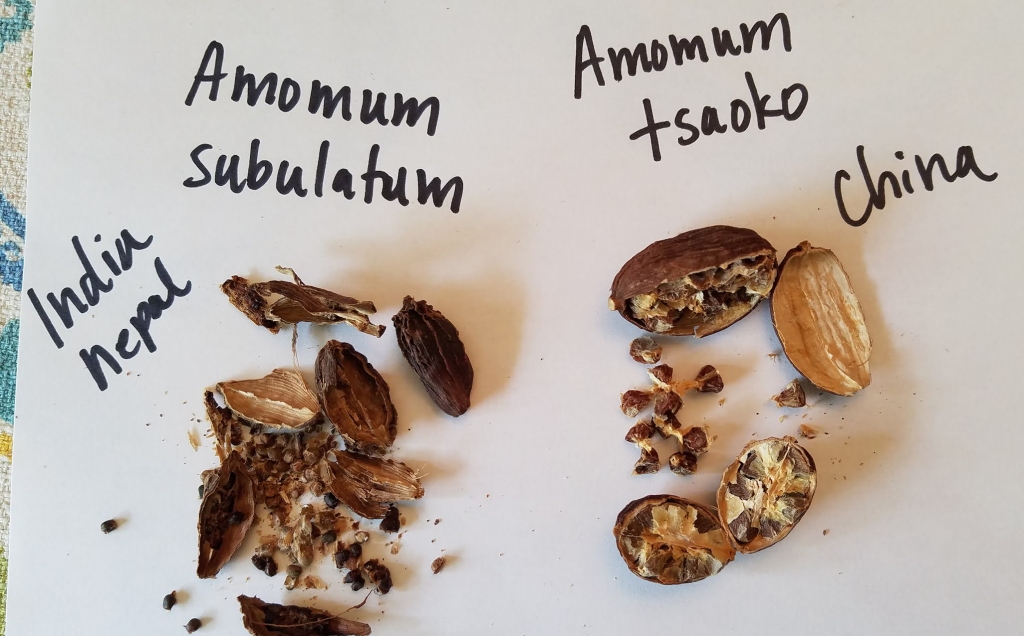One part of my mundane job is managing a Chinese medicinal herb dispensary. Recently, I needed black cardamom for an Indian recipe, and I realized that the black cardamom you can buy in an Indian grocery store looks completely different than the so-called “black cardamom” you buy in Chinese grocery stores and is used medicinally in Traditional Chinese herbal formulas. I knew they were different, but it turns out that they are from different plants completely.

Both of these plants are in the Amomum genus in the family Zingiberaceae – the ginger family. They are closely related to green cardamom and grains of paradise- grains of paradise are usually sold with the seeds separated from the pod, unlike black cardamom, tsaoko cardamom, and green cardamom. There are several other cardamom varieties used in cooking and medicine in China, as well as ornamental varieties grown for their delicate flowers.
